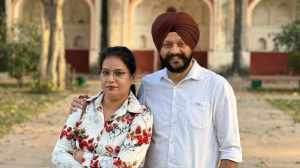In dry farm, an end to the drought rout
Even as ever-increasing numbers of farmers seem to contemplate giving up lives frustrated by the lack of rain and infrastructure, an NGO in ...

Even as ever-increasing numbers of farmers seem to contemplate giving up lives frustrated by the lack of rain and infrastructure, an NGO in this Gandhian backyard is holding out a ray of hope for dryland farmers.
Chetana Vikas (CV) has demonstrated how 35 different crops, including 80 per cent of the food items required by a family of five through the year, can be well harvested on 2.5 acres of land under the most trying weather conditions. More: The farmer can end the year with a reasonable amount of cash in the hand.
For a reality check, visit the CV farm. The sight is almost surreal: A small landholding blossoming handsomely amid vast tracts sacrificed to the worst weather conditions in recent memory.
The secret is a meld of traditional wisdom and scientific intercropping. The approach has proved beneficial to hardy and popular varieties of cash crops like cotton and soyabean, not to mention various kin of pulses, sorghum, sesame, paddy, spices, vegetables and even groundnut, all growing together in close proximity.
‘‘We first surveyed some farmer families to know their annual food and non-food needs, and determined Rs 25,000 to be the annual cost of present living standards for a five-member family,’’ says Niranjana Maru, CV’s scientific project officer.
‘‘So, we started experimenting on the model on 2.5 medium quality dryland. For the past five years, we have been modifying our model by incorporating everything needed under varying natural conditions to make it cost-beneficial,’’ she adds. In 2003-04, CV had Rs 6,925 as input cost and earnings of Rs 19,663, with Rs 13,929 in cash.
‘‘This year, we used the first-ever rains prediction to complete sowing. Contour bunding saved our crop from the dry stress. Hardy farm-grown seed varieties helped survive the erratic weather,’’ Maru says.
|
CV SAVIOURS
|
|||||
|
• Satellite pictures to time operations Story continues below this ad |
|||||
Productive use of appropriate science is a proud feature of the CV model. ‘‘We sow legumes near cotton to help grow the rhizobium bacteria which fixes nitrogen. Legumes also ensure in-situ compost manufacture which helps cotton. A vast variety of crops ensures mutual control of each other by the insects. Select grass species are grown on contour bunding so as to hold it in place,’’ says Ashok Bang, CV director.
But for Bang, one of the paramount advantages of the model is that by taking care of a family’s nutritional needs, it also takes care of health concerns.
With 500 farmer-families from 200 villages associated in the project, the training and interactive sessions benefit both CV and the farmers. The first farmers to replicate the model in their respective farms were Janardan Kinkar of Narsingpur, Janrao Kolhe of Wardhapur and Krishna Borkar of Warud, who took in more than 20 crops last year. Seventeen more have followed suit.
It’s not all smooth sailing, though, when it comes to convincing farmers of the benefits of the model. ‘‘Farmers are initially apprehensive about taking in so many crops together, feeling it will be difficult to sow many crops together,’’ says Maru. ‘‘But we demonstrate how easily the sowing can be done in just one day.’’
CV’s objective, says Maru, was to ‘‘ensure crop diversity with low-input cost and nutritional insurance’’. Mission largely accomplished, their next goal is work on similar experiments for a middle-class living standards model.
Photos





- 01
- 02
- 03
- 04
- 05


























